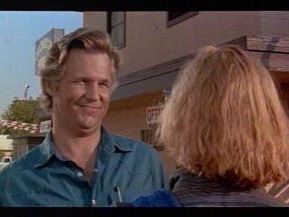|
|
Chapter Two: Texasville vs. The Evening StarBy Brett Ballard-BeachJuly 7, 2011
Both films have as their major theme the passage of time and the effect that simply putting forth and surviving day-to day living among family and friends, in particular social and economic climates in large and small Texas towns alike in the 1980s and ‘90s, can have on one’s physical and mental well-being. In this respect, both stories are well-served by having actors reprise their roles from the first film, to be able to compare youth with middle age (the cast of Texasville) and middle age with old age (Shirley MacLaine and Jack Nicholson in The Evening Star). The plot, occupations, and actions of the characters, in a sense, do not matter. These are character studies. What complicates things is that both films are extremely plot-heavy, particularly in regards to the sexual congress of the characters. At times in Texasville, I thought I might need a scorecard to keep track of who was bangin’ whom or had knocked whom up. Both of the plots are in fact, glorified soap operas, with Texasville reminiscent at times of the underbelly of the glitzy 1980s nighttime soaps like Dallas or Falcon Crest and The Evening Star best understood as a slightly ribald embroidered tablecloth covering a daytime soap. (A brief aside: to pursue this line of thinking one step further, perhaps the most insightful criticism I can offer of The Evening Star is that it is the kind of film that used to play a lot on Saturday or Sunday afternoons on your local television affiliate if no major sporting events had been scheduled. Or perhaps a last-minute replacement if said event had been cancelled. It is not to be confused with one that would garner repeated play, usually a B-grade level action flick, when those existed, and if you just waited long enough, you could catch it again. The likes of The Evening Star would come on and if it was your cup of tea, it could catch your interest for an hour or two, but you would have total amnesia upon its completion.)
|

|
|
|

|
Friday, November 1, 2024
© 2024 Box Office Prophets, a division of One Of Us, Inc.


